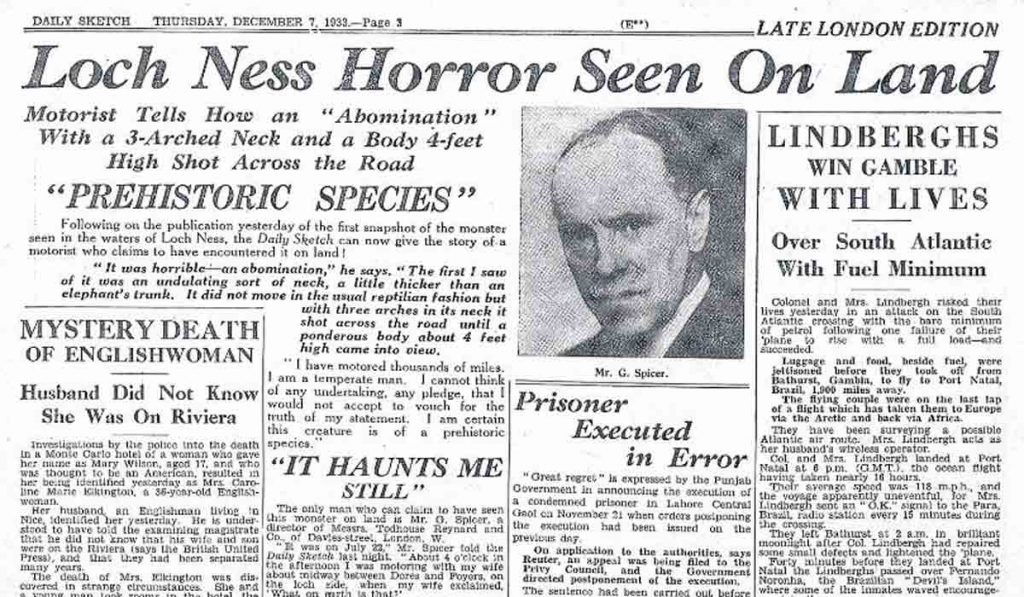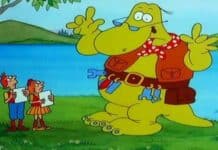ANDREW GARVEY looks at the British newspaper reaction to the sigthing of “Nessie” when the famous inhabitant was “rediscovered” in Loch Ness in 1933.
On July 22nd 1933, George Spicer and his wife saw “a most extraordinary form of animal” cross the road in front of their car and head towards Loch Ness.
In the 80 years since that sighting awakened modern interest in the mysterious beast we’ve become used to all manner of theories, hoaxes, investigations (of both the most scientific, and the most crackpot kind) and the monster’s relentless exploitation for tourism, merchandising, books, film and television.
But what was the reaction to the Loch Ness Monster in those first few months?
Reaction to Loch Ness Monster
A look at some of Britain’s provincial newspapers of the time reveals some very recognisably modern attitudes.
Proving rampant commercialism and opportunistic marketing are far from new, Colman’s Mustard were soon using the beast in advertising.
Here’s a snippet of what their marketing people came up with for a newspaper ad featuring: “… the Loch Ness ‘sea serpent,’ which has been accused of eating ‘ten bags of cement from the shore of the loch.’ Let us hope there was also a ‘monster’ tin of Mustard to help digestion, just as we help our digestions with a good dab of golden Mustard when we eat bacon and eggs, roast beef or cold ham. How it improves the flavour, too!” (Nottingham Evening Post, November 15th 1933)

It wasn’t just companies jumping on the bandwagon, either. The media attention focused on Loch Ness drew others out into the open to share their own stories. A former German U-Boat commander wrote to a Berlin newspaper claiming that after sinking the British steamer, Iberian, off the coast of Scotland in June 1915, he and his officers saw a creature, described as a 60 foot crocodile with four webbed feet flung into the air by an explosion and crash back into the water, sinking from view. (Western Morning News, December 20th 1933)
Unsurprisingly, discussion of the monster soon reached the House of Commons.
On December 12th 1933, Sir Godfrey Collins, the Secretary of State for Scotland, was questioned about it and, reported the Western Daily Press, said “there appeared to be no reason to suspect the presence of any baneful monster in Loch Ness and he would like more evidence before calling upon the Air Force to seek the creature.” On the 14th, the same paper editorialised about the potential political gains to be had, since capturing the creature: “… would surely be a stroke of political genius, especially at a time when by-elections demand repeated proof that Ministers are executing their mandate with vigour and success… By-elections have been won on less substantial arguments than the corpse of a prehistoric creature.” (Western Daily Press, December 13th and 14th 1933)
Some prominent public figures offered huge rewards for the retrieval of a (living, breathing) Loch Ness monster, including London-based circus owner Bertram Mills who put up a then-enormous £20,000. (Hull Daily Mail, December 15th 1933)
A few months later a less substantial offer of £5,000 came all the way from the USA as Dr. W. Reid Blair, Director of the New York Zoological Park put up the money as “an opportunity for an ambitious young man” provided they could produce the monster “alive, healthy and at least 40 feet long.” (Western Daily Press, May 12th 1934)
Whether Dr. Reid would have dismissed a 39½ foot long previously undiscovered aquatic monster as unworthy of his attention is something we’ll never know but clearly, ‘Nessie-Mania’ hit hard, hit fast and has stayed with us ever since.









